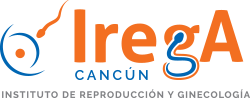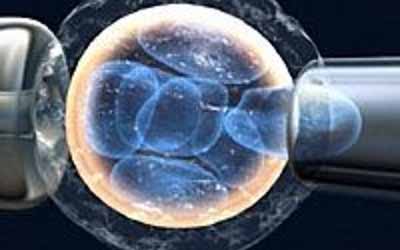Natural Cycle
It is indicated in couples with drug allergies or ethical or religious beliefs that lead them to reject any assisted reproduction technique that is not natural . In this technique the patient does not receive any medication , but simply dominant follicle growth is controlled. The timing of intercourse is determined by the LH surge , which occurs 24 hours before spontaneous ovulation. Must be monitoriada from the ninth day after the rule , for this there is a very simple and convenient to use for the patient urine kit . Ovulation induction . To avoid tracking of endogenous LH peak in the above ténica necessary , physicians are advanced with the intravenous administration of 5000 IU of hCG when it is found that the existence of ultrasound mature ovulatory follicle . Following administration of hCG 10,000 IU and 5000 , the follicle to ovulate between 37 and 38 hours later. The hCG and LH hormones are very similar since they cause and maintain luteinization . HCG is eliminated more slowly and its biological activity is greater (less units required). The LH produces fewer complications ( hyperstimulation syndrome OHSS) but commercial presentation precludes using thousands of IU ( 15 to 30,000 IU ) . This technique allows greater control over the timing of ovulation , allowing time intercourse ( 0 to 48 hours ) , insemination (24 and 48 hours) or follicular aspiration ( in the morning 36 hours later). Thus planning clinic facilitates and particularly IVF lab
Artificial Insemination
Artificial insemination allows fertilization is done so natural.Al introduce sperm into the uterus, it must find its way to the mature egg and inserted on its own, as was the case in pregnancy tradicional.La big difference and advantage artificial insemination is that the path of sperm is shorter and less risky. Medical introduction of semen or sperm into the woman's vagina in order to achieve pregnancy. This pathway is called 'artificial insemination'. Normally, with this technique, in 100 insemination cycles 13 result in pregnancy, and 100 couples who complete 4 cycles, 60 get pregnant. Of all pregnancies achieved, 15-20% are twins and another 15% are undermined. To undergo a cycle of artificial insemination have to meet certain requirements relating to: the fallopian tubes must be permeable, semen must be of good quality, and have to consider other factors such as age of the woman, time sterility and insemination cycles prior to deciding whether to perform a new cycle of artificial insemination or else it would be advisable to undergo a more complex technique such as in vitro fertilization and embryo transfer, which would offer more guarantees success. Homologous artificial insemination or spousal (IAH): two situations depending on the origin of semen are distinguished semen comes from the couple. Is held artificially inseminating when there are problems that sperm deposited in the vagina of women naturally (intercourse), for example due to problems with premature ejaculation, vaginismus, impotence or retrograde ejaculation. It can also be used to IAH uterine malformations when this woman, too thick cervical mucus, ovulatory dysfunction, etc ... or just when the cause of infertility in couples is unknown (34% of cases). Artificial insemination with donor (IAD): semen comes from an anonymous donor. It uses a sperm bank when the male member of the couple has azoospermia, an inherited genetic disease or STD, when the patient is a woman without a partner ... and when it has already failed ICSI, either by fertilization failure or poor quality embryos (genetic or morphological) Artificial insemination consists of three phases: Ovarian hormonal stimulation to increase the number of mature oocytes. Semen preparation, selecting and concentrating the motile sperm. Insemination of the female, which is performed in a query.
In Vitro Fertilization (FIV)
IREGA CANCÚN
- Hospital Galenia Planta Baja Av. Tulum Lote 01 Maza. 01 SM 12 Fracc. Sta. Maria Sike Esq. Nizuc, C.P. 77505


